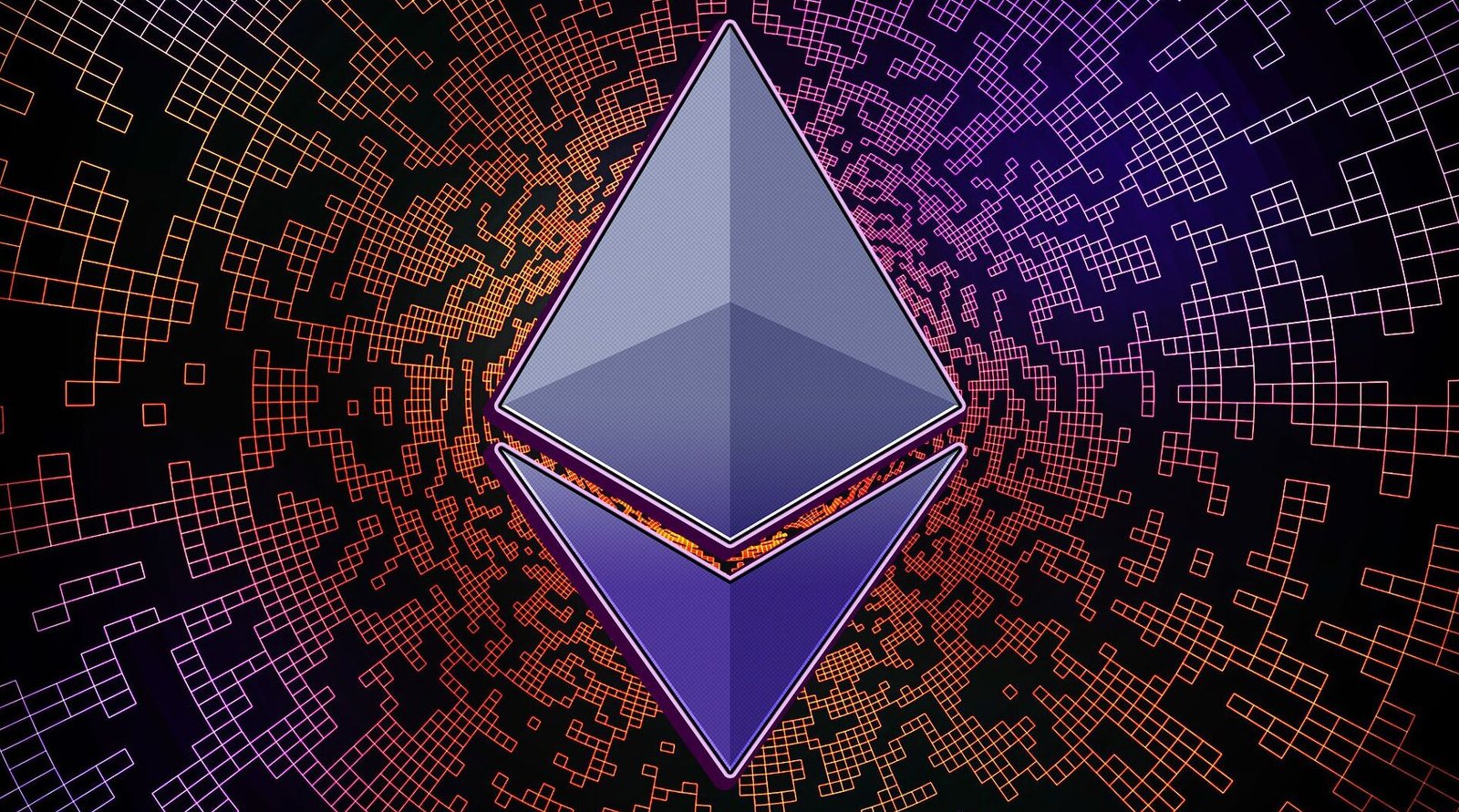Ethereum Upgrade News and Updates 2025 Latest Protocol Changes & Roadmap

The cryptocurrency landscape continues to evolve rapidly, with Ethereum leading the charge through continuous innovation and protocol improvements. For investors, developers, and blockchain enthusiasts worldwide, staying informed about Ethereum upgrade news and updates has become crucial for making informed decisions in this dynamic market. Recent developments in Ethereum’s ecosystem have introduced groundbreaking changes that are reshaping the future of decentralized finance, smart contracts, and blockchain scalability.
From major network upgrades to minor protocol enhancements, each update brings new opportunities and challenges that directly impact the entire crypto ecosystem. Understanding these changes isn’t just about technical knowledge—it’s about recognizing the profound implications for the future of digital finance and decentralized applications.
Latest Ethereum Network Upgrades and Protocol Changes
The Dencun Upgrade: A Game-Changer for Layer 2 Solutions
The Ethereum network recently implemented the Dencun upgrade, marking one of the most significant protocol improvements since the Merge. This upgrade introduced proto-danksharding through EIP-4844, dramatically reducing transaction costs for Layer 2 solutions. The implementation has resulted in up to 90% cost reductions for rollup transactions, making Ethereum-based applications more accessible to mainstream users.
Key features of the Dencun upgrade include:
- Blob Transactions: Introduction of a new transaction type specifically designed for rollup data
- Enhanced Data Availability: Improved data storage mechanisms for Layer 2 scaling solutions
- Reduced Gas Fees: Significant cost savings for users interacting with Layer 2 networks
- Improved Network Efficiency: Better resource utilization across the entire Ethereum ecosystem
The upgrade has already shown measurable improvements in network performance, with popular Layer 2 solutions like Arbitrum, Optimism, and Polygon experiencing substantial fee reductions. This development represents a crucial step toward Ethereum’s vision of becoming a global settlement layer for decentralized applications.
Ethereum 2.0 Roadmap Progress and Upcoming Milestones
Ethereum’s transition to a proof-of-stake consensus mechanism was just the beginning of a comprehensive upgrade roadmap. The current development phases focus on several critical areas that will define Ethereum’s long-term scalability and functionality.
The Surge Phase concentrates on achieving 100,000+ transactions per second through rollup-centric scaling. Developers are working on various scaling solutions, including:
- State Channels: Off-chain transaction processing for specific use cases
- Plasma Implementations: Hierarchical blockchain structures for improved throughput
- Optimistic and ZK-Rollups: Advanced Layer 2 solutions with different trust assumptions
- Sharding Integration: Database sharding techniques adapted for blockchain architecture
The Scourge Phase addresses MEV (Maximal Extractible Value) issues and ensures fair transaction ordering. This phase includes:
- Protocol-level MEV mitigation: Built-in mechanisms to prevent transaction manipulation
- Censorship resistance improvements: Enhanced network resilience against external pressures
- Validator behavior optimization: Incentive alignment for network security
Ethereum Upgrade News: Market Impact and Adoption Trends

Institutional Response to Recent Ethereum Updates
The latest Ethereum upgrade news and updates have generated significant interest from institutional investors and enterprise adoption. Major financial institutions are increasingly viewing Ethereum as a mature blockchain platform suitable for enterprise-grade applications.
Recent institutional developments include:
- JPMorgan’s Onyx Platform: Expanded use of Ethereum-based settlement systems
- Visa’s Crypto Integration: Enhanced support for Ethereum-based payment solutions
- Microsoft’s Azure Blockchain: Improved Ethereum development tools and services
- ConsenSys Enterprise Solutions: Growing adoption of Ethereum for supply chain management
These institutional endorsements validate Ethereum’s technical improvements and demonstrate growing confidence in the platform’s long-term viability. The reduced transaction costs and improved scalability resulting from recent upgrades have made Ethereum more attractive for large-scale commercial applications.
Developer Ecosystem Growth and Innovation
The Ethereum developer community has responded enthusiastically to recent protocol upgrades, with significant increases in development activity across various metrics. GitHub activity, developer grants, and new project launches have all shown substantial growth following major network updates.
Notable developer ecosystem trends include:
- Increased DApp Development: 40% growth in new decentralized application deployments
- Enhanced Developer Tools: Improved debugging and testing frameworks
- Cross-Chain Integration: Better interoperability with other blockchain networks
- Educational Resources: Expanded documentation and learning materials
The growing developer ecosystem creates a positive feedback loop, where improved infrastructure attracts more developers, leading to better applications and increased network utilization.
Technical Analysis of Recent Ethereum Protocol Improvements
EIP Implementation and Network Performance Metrics
Ethereum Improvement Proposals (EIPs) serve as the formal mechanism for introducing protocol changes. Recent EIP implementations have focused on optimizing network performance while maintaining security and decentralization principles.
EIP-4844 (Proto-Danksharding) represents the most significant recent improvement, introducing blob-carrying transactions that provide temporary data availability for rollup solutions. Performance metrics show:
- Transaction Throughput: 30% improvement in overall network capacity
- Gas Efficiency: 25% reduction in average transaction costs
- Block Utilization: Optimized space allocation for different transaction types
- Network Stability: Maintained 99.9%+ uptime throughout implementation
EIP-1559 Enhancements continue to refine the fee market mechanism, providing more predictable transaction costs and improving user experience. Recent refinements have addressed edge cases and improved fee estimation algorithms.
Security Enhancements and Validator Performance
Network security remains paramount in Ethereum upgrade news and updates, with recent improvements focusing on validator performance and network resilience. The proof-of-stake mechanism has proven robust, with validator participation rates consistently above 99%.
Security improvements include:
- Slashing Condition Refinements: More precise penalties for malicious behavior
- Validator Client Diversity: Improved distribution across different software implementations
- MEV Protection Mechanisms: Built-in safeguards against transaction manipulation
- Network Monitoring Tools: Enhanced ability to detect and respond to potential threats
These security enhancements provide confidence for institutional adoption while maintaining the decentralized nature that makes Ethereum valuable.
Future Ethereum Upgrades: What’s Coming Next
The Verge: Stateless Ethereum and Verkle Trees
The Verge represents one of the most ambitious phases in Ethereum’s upgrade roadmap, focusing on implementing stateless clients and Verkle trees. This upgrade will dramatically reduce the hardware requirements for running Ethereum nodes, improving decentralization and accessibility.
Key components of The Verge include:
- Verkle Tree Implementation: More efficient data structures for state management
- Stateless Client Architecture: Reduced storage requirements for network participation
- Witness Data Optimization: Compressed proofs for state transitions
- Node Synchronization Improvements: Faster initial sync times for new nodes
These improvements will make it possible to run full Ethereum nodes on mobile devices and low-powered hardware, significantly expanding the potential validator base.
The Purge: Historical Data Management
The Purge phase addresses the growing size of Ethereum’s blockchain by implementing mechanisms to reduce node storage requirements without compromising security. This upgrade introduces innovative approaches to historical data management while maintaining network integrity.
Planned improvements include:
- State Expiry Mechanisms: Automatic cleanup of unused state data
- Historical Data Pruning: Selective retention of critical blockchain history
- Witness-Based Validation: Verification methods that don’t require full historical data
- Storage Optimization: Compressed data formats for improved efficiency
Ethereum Layer 2 Integration and Scaling Solutions

Rollup Technology Advancements
Recent Ethereum upgrade news and updates have significantly improved Layer 2 scaling solutions, particularly rollup technologies. These improvements create a more seamless experience for users while maintaining Ethereum’s security guarantees.
Optimistic Rollups have benefited from:
- Reduced Challenge Periods: Faster finality for user transactions
- Improved Fraud Proof Systems: More efficient dispute resolution mechanisms
- Enhanced Interoperability: Better communication between different rollup implementations
- Cost Optimization: Further reductions in transaction fees
ZK-Rollups have seen advances in:
- Proof Generation Speed: Faster zero-knowledge proof creation
- EVM Compatibility: Better support for existing Ethereum applications
- Recursive Proofs: Improved scalability through proof aggregation
- Developer Tools: Enhanced frameworks for ZK-rollup development
Also Read: Arbitrum: Boosting Ethereum Scalability with Layer-2 Solutions
Cross-Chain Interoperability Improvements
Ethereum’s recent upgrades have improved its ability to interact with other blockchain networks, creating a more connected and efficient multi-chain ecosystem. These improvements facilitate asset transfers and communication between different blockchain platforms.
Interoperability enhancements include:
- Standardized Bridge Protocols: Common interfaces for cross-chain communication
- Atomic Swap Improvements: More reliable cross-chain asset exchanges
- Multi-Chain Wallet Support: Better user experience for managing assets across networks
- Validator Set Sharing: Shared security models for connected chains
Market Analysis and Price Impact of Ethereum Upgrades
Historical Performance During Major Updates
Analyzing historical data reveals interesting patterns in Ethereum’s market performance during major upgrade announcements and implementations. Understanding these trends helps investors and stakeholders make informed decisions about their involvement in the Ethereum ecosystem.
Pre-Upgrade Phases typically show:
- Increased Trading Volume: Higher market activity as anticipation builds
- Price Volatility: Short-term fluctuations due to uncertainty and speculation
- Developer Activity Spikes: Increased preparation and testing activities
- Media Attention Growth: Enhanced coverage in cryptocurrency and technology news
Post-Upgrade Periods generally demonstrate:
- Network Usage Growth: Increased adoption of new features and capabilities
- Improved Fundamentals: Better performance metrics and user satisfaction
- Long-term Price Appreciation: Sustained value growth following successful implementations
- Ecosystem Expansion: New applications and services built on upgraded infrastructure
Institutional Investment Trends
Recent Ethereum upgrade news and updates have attracted significant institutional attention, with many large-scale investors increasing their Ethereum allocations. This institutional interest provides stability and legitimacy to the Ethereum ecosystem.
Notable institutional trends include:
- Ethereum ETF Interest: Growing demand for regulated Ethereum investment vehicles
- Corporate Treasury Adoption: Companies adding ETH to their balance sheets
- DeFi Integration: Traditional finance platforms incorporating Ethereum-based services
- Infrastructure Investment: Venture capital funding for Ethereum-focused projects
Conclusion
The rapidly evolving Ethereum ecosystem continues to push the boundaries of blockchain technology through innovative upgrades and protocol improvements. By staying informed about Ethereum upgrade news and updates, investors, developers, and users can position themselves to benefit from these technological advances while making informed decisions about their involvement in the ecosystem.
The recent Dencun upgrade and ongoing development phases demonstrate Ethereum’s commitment to solving scalability challenges while maintaining security and decentralization. As we look toward future upgrades like The Verge and The Purge, the potential for further improvements in efficiency, accessibility, and functionality remains substantial.
